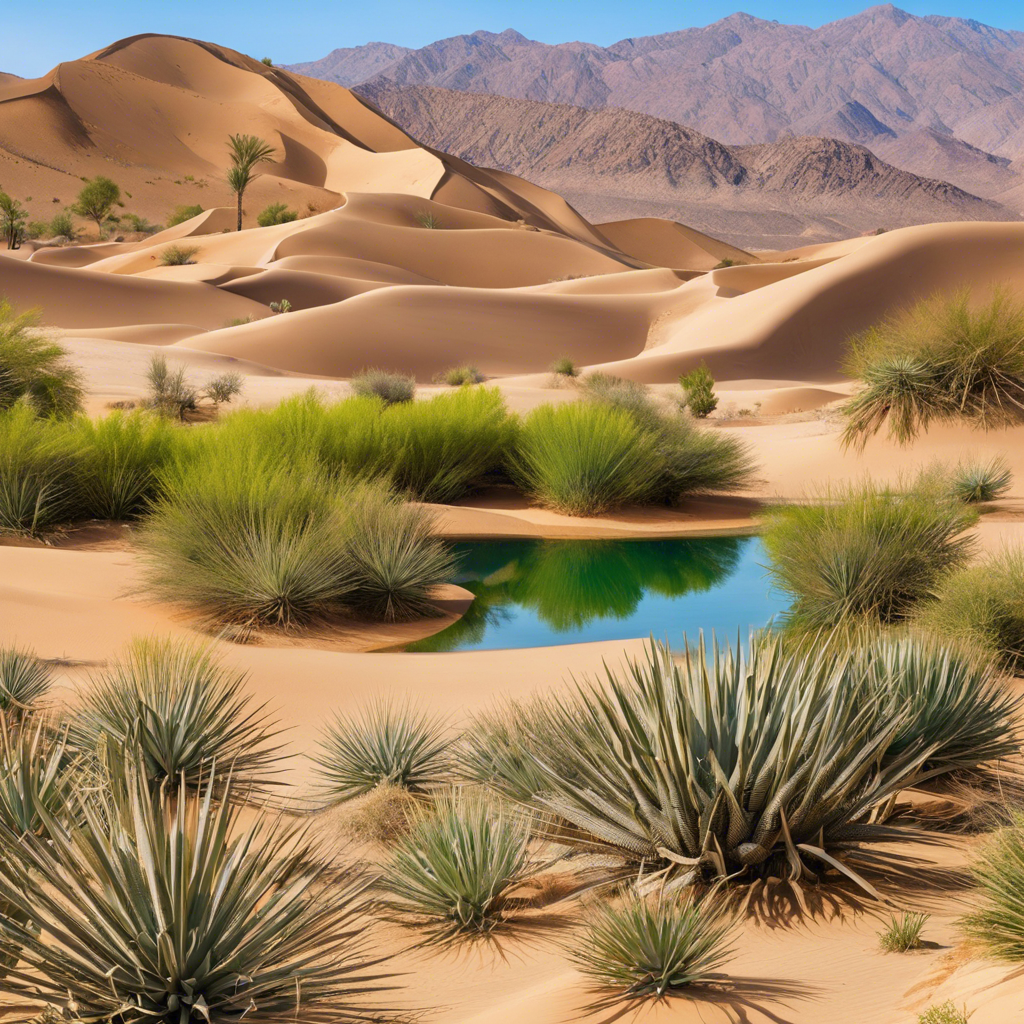The vast, arid landscapes of our planet often conjure up images of desolation and barrenness, yet hidden within these harsh environments are oases—enclaves of lush greenery and tranquility that offer a stark contrast to their surrounding deserts. These hidden gems, formed by natural springs or underground water sources, provide a vital lifeline to both the human and animal inhabitants of these regions.
Oases have long been vital waypoints for travelers and traders journeying through arid regions, offering not just physical sustenance but also a much-needed respite from the unrelenting sun and parched conditions of the desert. Often surrounded by date palms and other drought-resistant vegetation, they present a picturesque and inviting prospect to weary explorers.
One such example is Siwa Oasis, nestled deep within Egypt’s Western Desert. Here, amid the sprawling sand seas, lies a fertile haven with abundant date palms, olive trees, and crystal-clear springs. Siwa has been a sanctuary for centuries, providing refuge to ancient civilizations and modern travelers alike.
In the heart of the Tunisian Sahara, you’ll find another enchanting oasis, Tozeur, known as the “Palm Tree Oasis.” This lush paradise is famed for its sprawling palm groves and picturesque landscape. The network of underground canals, known as “foggara,” built by ancient Berber tribes, continues to irrigate the oasis, sustaining a vibrant ecosystem.
Across the Atlantic, South America boasts its own remarkable oasis, the Huacachina Oasis in Peru. This idyllic spot, surrounded by towering sand dunes, is said to possess therapeutic waters, attracting visitors seeking both relaxation and adventure. The legend of the Huacachina Oasis involves a beautiful princess who cried tears that formed the lagoon, giving rise to its mythical allure.
Australia’s Outback, known for its harsh and arid conditions, is home to some remarkable oases as well. One such example is Palm Valley, located in the Finke Gorge National Park. Here, a secluded oasis supports a diverse array of plant life, including the iconic red cabbage palm, found almost exclusively in this region.
These oases, scattered across the globe, offer not just physical sustenance but also a sense of wonder and respite from the harshness of the desert. They stand as a testament to the resilience of nature, flourishing in even the most unforgiving of environments, and serve as a reminder of the beauty and tranquility that can be found in the midst of aridity.
The existence of these desert oases highlights the complexity and diversity of our planet’s ecosystems, where even in the driest of lands, life finds a way to thrive and flourish. They serve as a beacon of hope, reminding us that amidst the challenges and hardships we face, there are always pockets of beauty, resilience, and tranquility waiting to be discovered.
For those seeking adventure, oases present a unique opportunity to explore and immerse themselves in nature’s wonders. Whether it’s a dip in the refreshing waters, a tranquil walk through the greenery, or a cultural exchange with the locals who call these places home, oases offer a holistic experience that caters to the body, mind, and soul.
In conclusion, desert oases embody the interplay between harshness and resilience, desolation and life, offering travelers and locals alike a sanctuary of tranquility and natural splendor within the world’s most arid landscapes. These hidden gems are a testament to nature’s ingenuity, providing oases of calm amidst the desert’s storms, and a reminder that beauty and life can be found even in the most unexpected places.

